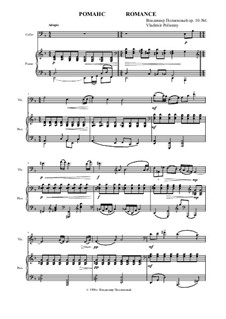

In any case, the sound is precise, well defined, solid, and robust. As I said earlier, the cello is in the forefront of the musical activity, which is, I suppose, the way it ought to be.

And what a pleasure it is to hear the London Symphony back recording at Abbey Road, the scene of so many of their previous successes. Producer Michael Fine and engineer Jin Choi recorded the music at Abbey Road Studios, London in July 2018. They are the icing on the cake and bring the program to a satisfying end. Lim credit for holding the work together so well and having it come through so engagingly.įollowing the three concertos, we get two shorter pieces: Les larmes de Jacqueline ("The Tears of Jacqueline") by Jacques Offenbach (1819-80) and the familiar "Meditation" from the opera Thais by Jules Massenet (1842-1912). Lim makes the most of before Milhaud starts going in all directions at once. The oddness of the music continues despite a lovely opening stretch that Ms. Milhaud's work relies less on pure melody and more on displays of seemingly indiscriminate mood swings from lyrical tenderness to somber reflection to a nearly cheerful giddiness. Written in 1934, its more modern and jazz-inflected disposition is notably different from that of the more Romantic Saint-Saens and Lalo pieces.

#ROMANTIC CELLO REPERTOIRE FULL#
It's an elegant reading, full of operatic color and character in its first two movements and a whole lot of zest in its final moments.Īfter that we find the Cello Concerto No. Lim takes the first two movements at a slightly more leisurely pace than one often hears, and it adds a sweet tone that complements the nature of this Spanish-influenced French music. He arranged it in a more traditional style than Saint-Saens did his concerto a few years earlier, and perhaps because of its strong hints of Spanish flamenco music, it gets its fair share of performances and recordings. Next, and maybe equally famous, is the Concerto for Cello and Orchestra in d minor by Edouard Lalo (1823-92), which he wrote in 1876. In other words, while there are more bravura performances you can find, there are none more sensitively committed. But she is also a delicate, introspective musician, and much of her talent is in the nuances of her playing. This is not to say she isn't a marvel to listen to she is an accomplished musician and the concerto's finale is an amazing whirlwind of notes. The musical lines are always clean and direct, the passion expressed through the score itself, not her own virtuosity. Yet unlike so many other soloists, she never tries to dominate the music with the force of her personality. Lim takes advantage of this situation with playing of steadfast command. The concerto keeps the solo instrument in the foreground almost the whole time, and Ms. Nevertheless, it became a favorite of cellists and composers everywhere, some of them like Rachmaninov and Shostakovich declaring it the greatest of all cello concertos. Written in one continuous movement split into three separate sections with interrelated ideas, Saint-Saens's concerto was unconventional for its time. So, the first thing up is the Concerto for Violin and Orchestra No. Anyway, the major attraction here, Saint-Saens's cello concerto, came somewhat late in the Romantic era, 1872, by which time the cello had firmly established itself as a commonly accepted part of the orchestral picture. Then, the twentieth century saw a greater blossoming of material for the instrument. Yet it wasn't until the later Romantic period that the cello began to flourish, with Schumann, Dvorak, and Brahms writing concertos for it. Bach wrote his six cello suites, of course later Haydn wrote a couple of cello concertos and Beethoven a few cello sonatas. The poor cello, a descendent of the bass violin, didn't find a serious place for itself until well into the Baroque period, and even then it held a limited position. Not that there is exactly a surplus of cello concertos to play, though. Lim performs five well-known cello pieces by French composers: Saint-Saens, Lalo, Milhaud, Offenbach, and Massenet. Supported by conductor Scott Yoo and the London Symphony Orchestra, Ms. It's no wonder, then, that so big and prestigious a record label as Sony Classical wanted to promote her first release. She tours as a soloist and recitalist and performs with the world's leading orchestras. Not only has she won major international competitions, she is Principal Solo Cellist of the Rotterdam Philharmonic Orchestra and the first Korean cello professor at the Central Conservatory of Music in Beijing. Her current recording, "French Cello Concertos," is the debut album for Korean cellist Hee-Young Lim, who has made quite a name for herself in the past few years. Hee-Young Lim, cello Scott Yoo, London Symphony Orchestra. Saint-Saens, Lalo, Milhaud, Offenbach, Massenet.


 0 kommentar(er)
0 kommentar(er)
